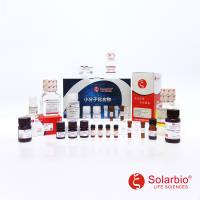【进展|热点】Nature Immunology: 让T细胞动起来
丁香园论坛
1156
Nature Immunology,Published online: 27 September 2009
Interactions between PD-1 and PD-L1 promote tolerance by blocking the TCR–induced stop signal
Brian T Fife,et al.
Programmed death 1 (PD-1) is an inhibitory molecule expressed on activated T cells; however, the biological context in which PD-1 controls T cell tolerance remains unclear. Using two-photon laser-scanning microscopy, we show here that unlike naive or activated islet antigen–specific T cells, tolerized islet antigen–specific T cells moved freely and did not swarm around antigen-bearing dendritic cells (DCs) in pancreatic lymph nodes. Inhibition of T cell antigen receptor (TCR)-driven stop signals depended on continued interactions between PD-1 and its ligand, PD-L1, as antibody blockade of PD-1 or PD-L1 resulted in lower T cell motility, enhanced T cell–DC contacts and caused autoimmune diabetes. Blockade of the immunomodulatory receptor CTLA-4 did not alter T cell motility or abrogate tolerance. Thus, PD-1–PD-L1 interactions maintain peripheral tolerance by mechanisms fundamentally distinct from those of CTLA-4.
内容简介:
CTLA-4和PD-1分子介导的免疫抑制信号是目前已知的抑制T细胞活性的信号通路中最重要的两个。PD-1分子与其配体PD-L1和PD-L2相互作用通过何种方式调控T细胞耐受尚不清楚。这篇文章通过对糖尿病鼠模型体内自身反应性T细胞的研究,对上述问题给出了一个答案,即PD-1和PD-L1相互作用,提高了自身反应性T细胞的运动能力,降低了自身抗原存在部位TCR介导的T细胞驻留信号,减少了由此引发的T细胞与自身抗原接触并结合的时间,实现了对T细胞耐受的调控。简单的说,PD-1与PD-L1相互作用驱使自身反应性T细胞动起来,降低其与自身抗原的接触时间和几率。
----------------------------------

Interactions between PD-1 and PD-L1 promote tolerance by blocking the TCR–induced stop signal
Brian T Fife,et al.
Programmed death 1 (PD-1) is an inhibitory molecule expressed on activated T cells; however, the biological context in which PD-1 controls T cell tolerance remains unclear. Using two-photon laser-scanning microscopy, we show here that unlike naive or activated islet antigen–specific T cells, tolerized islet antigen–specific T cells moved freely and did not swarm around antigen-bearing dendritic cells (DCs) in pancreatic lymph nodes. Inhibition of T cell antigen receptor (TCR)-driven stop signals depended on continued interactions between PD-1 and its ligand, PD-L1, as antibody blockade of PD-1 or PD-L1 resulted in lower T cell motility, enhanced T cell–DC contacts and caused autoimmune diabetes. Blockade of the immunomodulatory receptor CTLA-4 did not alter T cell motility or abrogate tolerance. Thus, PD-1–PD-L1 interactions maintain peripheral tolerance by mechanisms fundamentally distinct from those of CTLA-4.
内容简介:
CTLA-4和PD-1分子介导的免疫抑制信号是目前已知的抑制T细胞活性的信号通路中最重要的两个。PD-1分子与其配体PD-L1和PD-L2相互作用通过何种方式调控T细胞耐受尚不清楚。这篇文章通过对糖尿病鼠模型体内自身反应性T细胞的研究,对上述问题给出了一个答案,即PD-1和PD-L1相互作用,提高了自身反应性T细胞的运动能力,降低了自身抗原存在部位TCR介导的T细胞驻留信号,减少了由此引发的T细胞与自身抗原接触并结合的时间,实现了对T细胞耐受的调控。简单的说,PD-1与PD-L1相互作用驱使自身反应性T细胞动起来,降低其与自身抗原的接触时间和几率。
----------------------------------
版主freecell留言:
好久不见了。国庆之际,特别奖励1分!
好久不见了。国庆之际,特别奖励1分!









